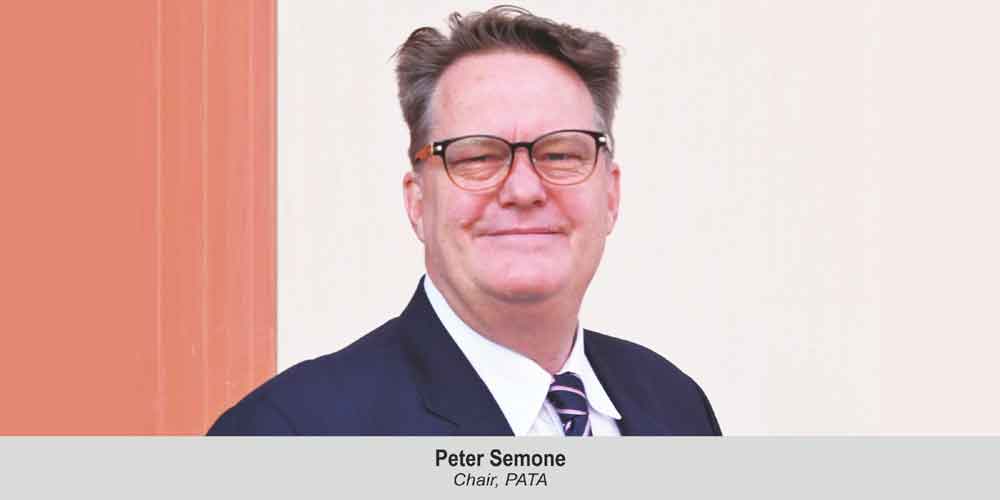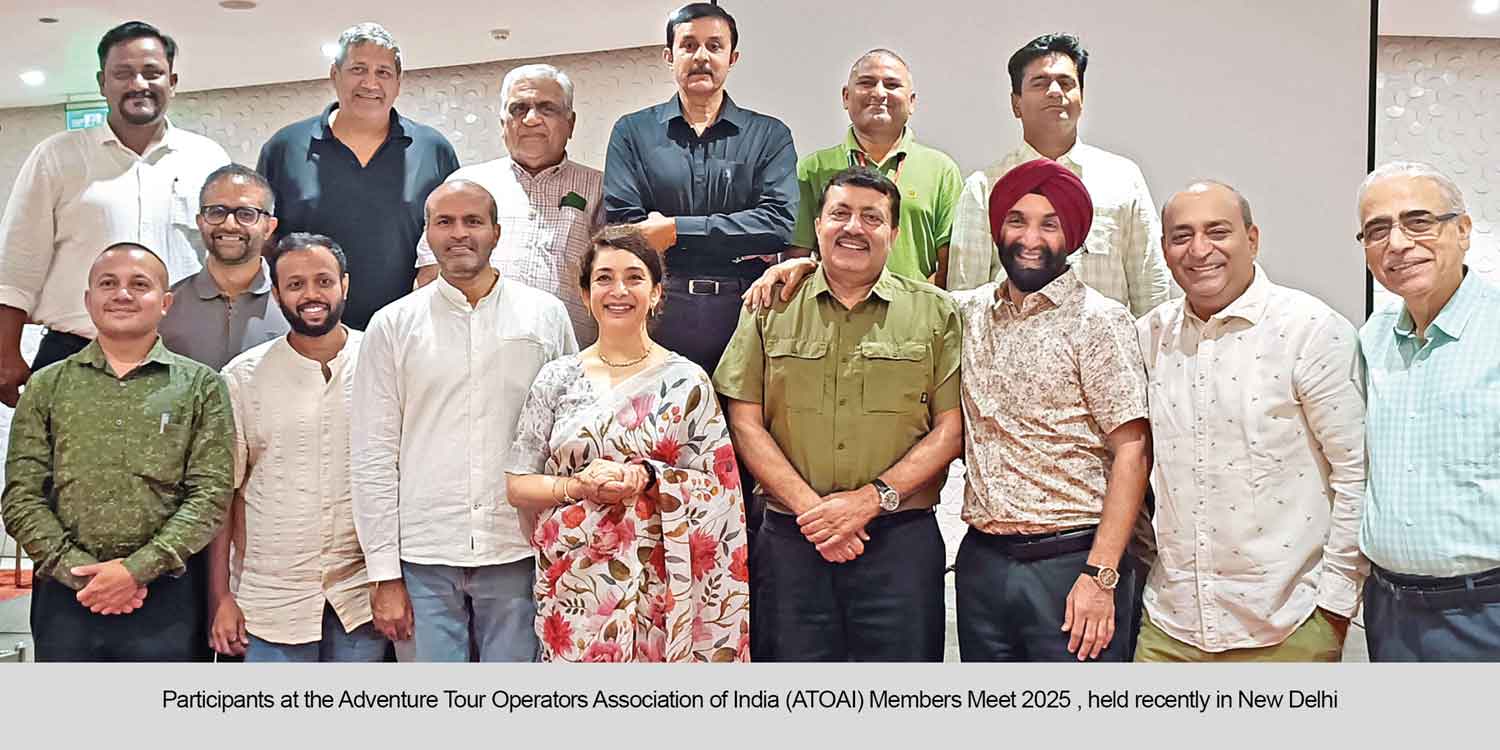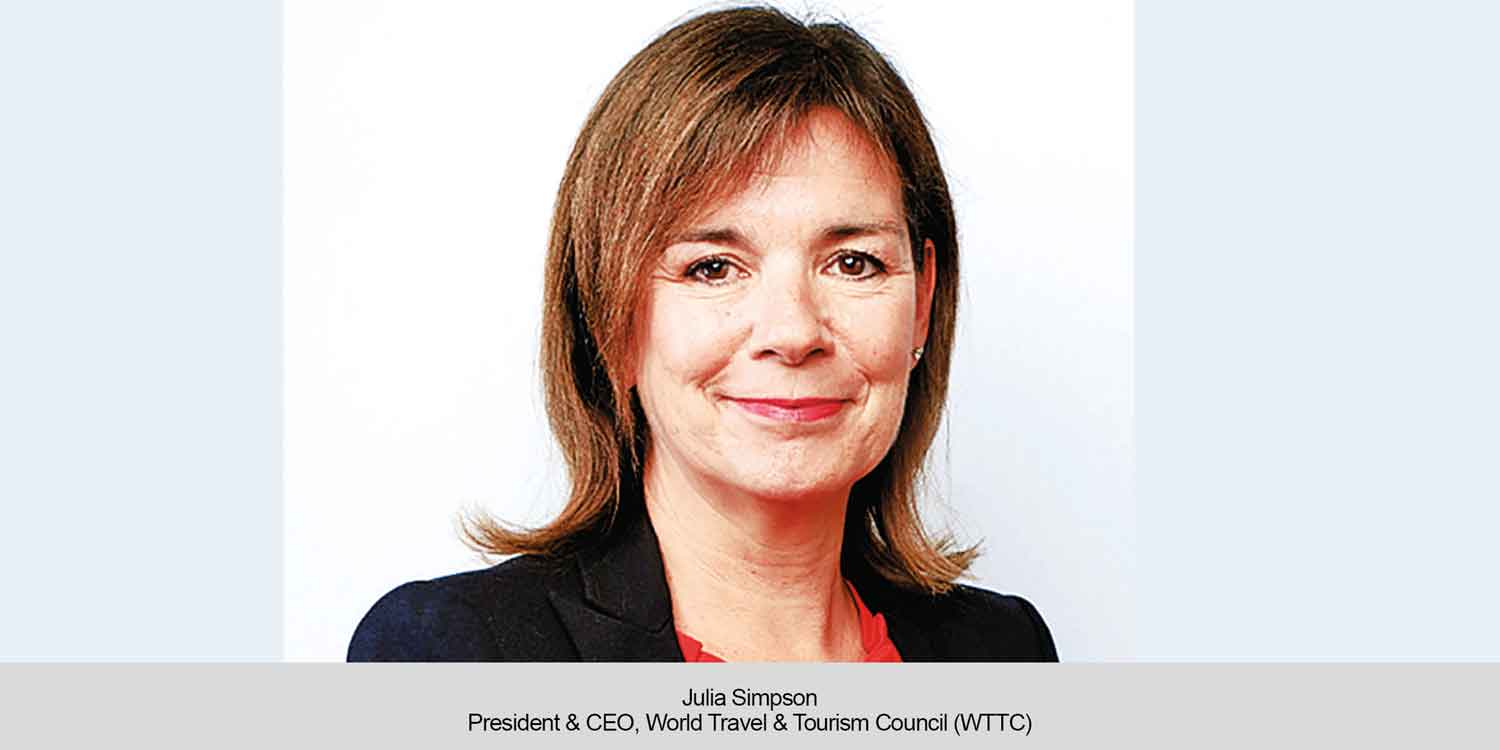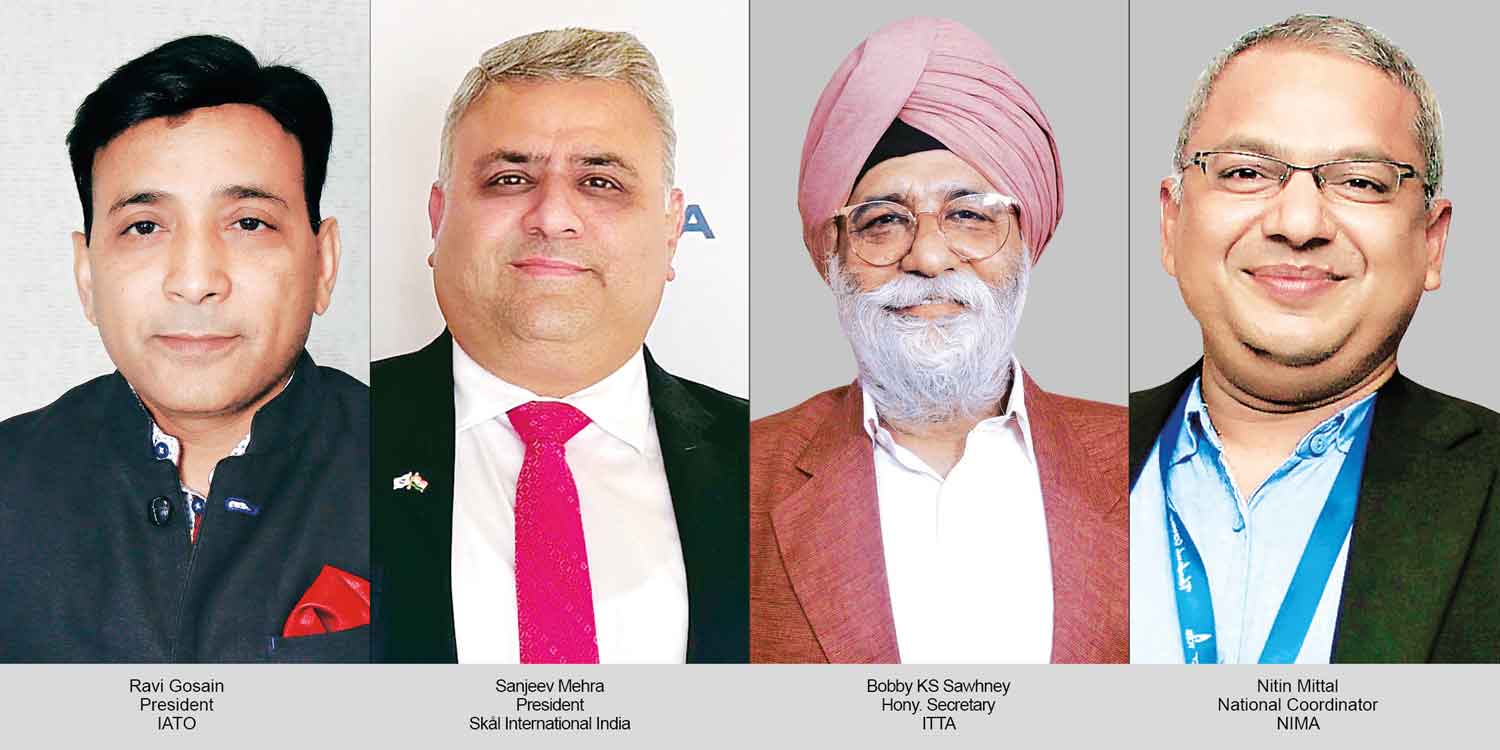Peter Semone, Chair, PATA, emphasises on sustainable tourism principles for India’s growth in the global market and its incredible potential as a source market for inbound tourism.
Janice Alyosius
Peter Semone, Chair, PATA, praised the Ministry of Tourism, Government of India, for the organisation of PATA Travel Mart 2023, which was held at Pragati Maidan in New Delhi recently.
“The India’s MoT of the Government of India has been one of our most valuable members and active partners for more than 60 years. Based on their commitment and enthusiasm in organising PATA Travel Mart, we at PATA are excited to facilitate engagement between India and the rest of the world through this event,” he said. “After a three-year hiatus, PATA Travel Mart continues to provide unparalleled networking and contracting opportunities for our delegates from all over the world,” he added.
Speaking at the event, Semone shared a set of guiding principles that PATA is committed to upholding in the Pacific Asia Region. These principles are encapsulated by the 5Ps of sustainable tourism development, which includes People, Planet, Prosperity, Partnership, and Peace. “As the travel and tourism industry is evolving at an unprecedented pace, PATA more than ever remains committed to creating a more efficient association that can better serve our members and industry colleagues, as we work towards the responsible and sustainable development of the industry,” he said.
Elaborating on how the travel mart will help India’s inbound numbers, Semone said, “We have almost 200 buyers from different parts of the world. Their experiences here in India will encourage them to go back and speak with their clients, and motivate more people to come to India. So, any investment by the Ministry of Tourism, by the people, and the industry, to bring overseas people to experience the product always ends up in a good result, as more people understand Indian culture and understand the uniqueness of the destination.”
Semone also highlighted the challenges that India needs to work on to increase the inbound numbers. “The visa policy is a challenge faced by many countries, and there are valid reasons for it. India, like any other nation, must prioritise its national security. Indians are very friendly, so once the travellers get here, they discover the warmth and friendliness of the people. India offers a wonderful experience. However, it’s essential to recognise the immense size and diversity of India, it surpasses even China in population. To encourage more tourists, unravelling the mystique of India may be beneficial. Given India’s size, it might be helpful to break it down into smaller, more manageable pieces. This way, visitors can explore regions like Kerala or Delhi, each offering unique experiences. It’s unrealistic to expect outsiders to grasp the full scope of India’s vastness and decide where to go. Simplifying the understanding of the country into bite-sized portions could contribute to India’s success in growing tourism.”
Emphasising on India’s tourism potential, Semone said, “India in terms of a source market and in terms of Indian visitors, is incredible. Unlike the Chinese market, which can be unpredictable in terms of travel patterns, the Indian market tends to be more reliable with fewer fluctuations. It is essential to remember that India has a vast population, and only a small percentage can travel internationally and accommodating Indian dietary preferences can pose challenges for many destinations. Therefore, there is a lot of room for the Indian tourism industry to help guide other destinations on how to understand and satisfy the needs and the wants of Indian travellers. This calls for extensive cross-cultural and cross-industry education between the Indian tourism sector and other parts of the world. The goal is to share insights on how to prepare for Indian visitors and what considerations should be made to enhance their experience.”
 TravTalk India Online Magazine
TravTalk India Online Magazine







